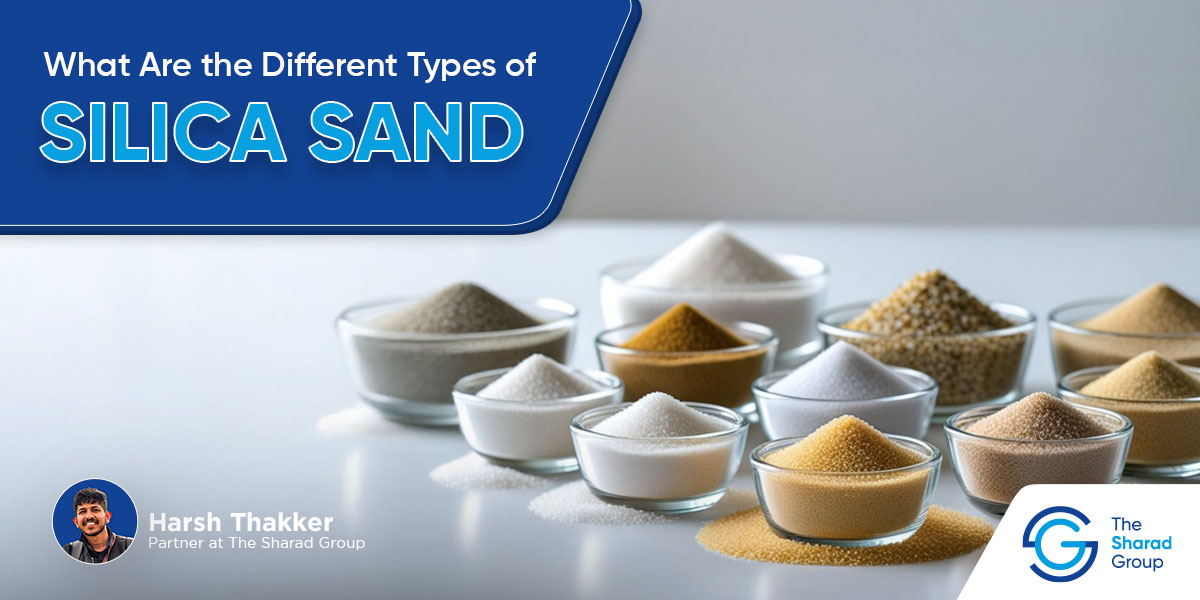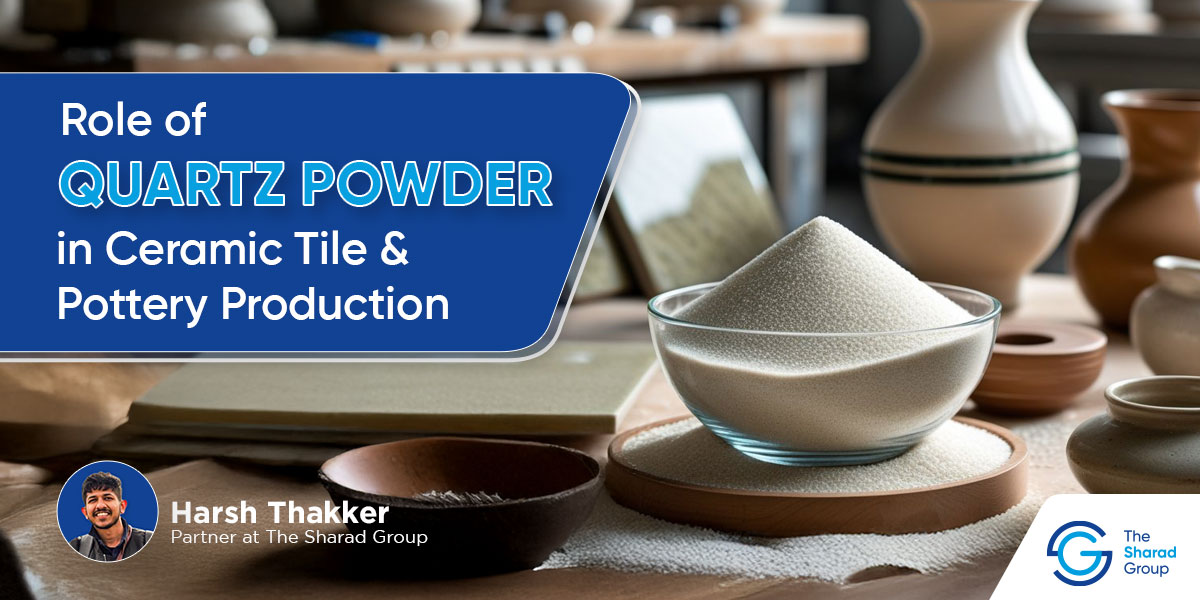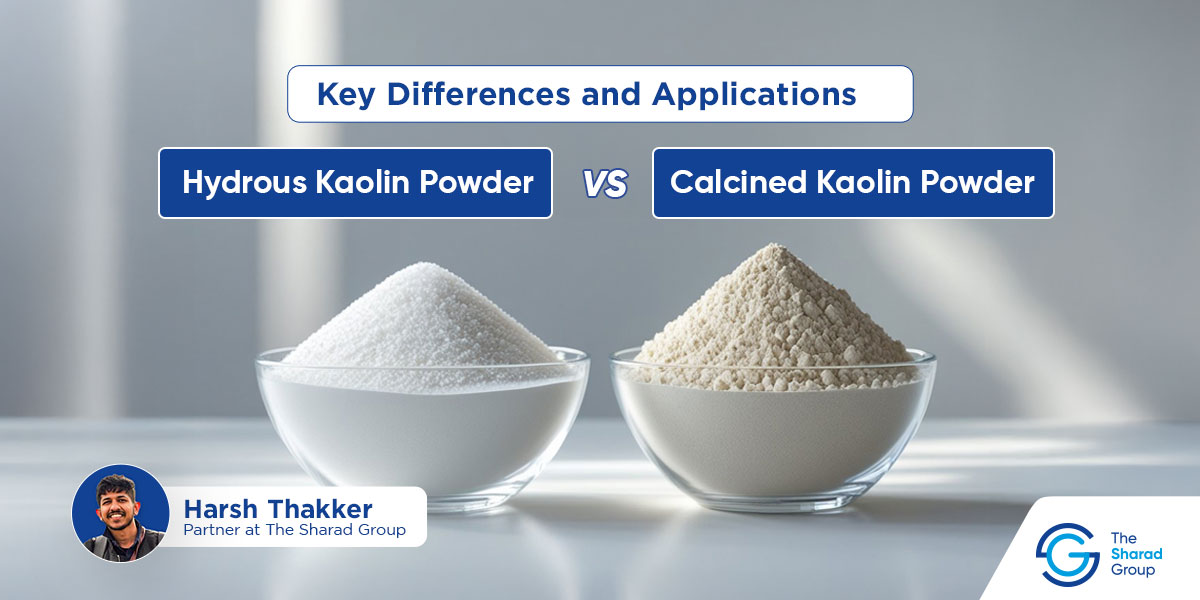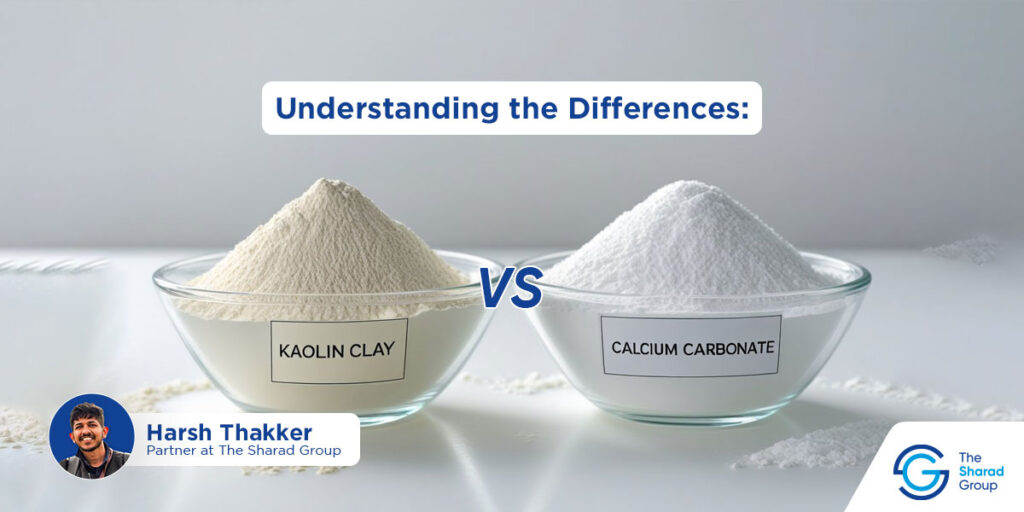
What's on this page:
ToggleIf you’re a product manufacturer, you know the difference that the right filler can make.
After all, it can provide your product with:
- High gloss
- Durability
- Smoothness
And it doesn’t stop there!
If you choose the right filler material for your manufacturing process, it can:
- Reduce your production costs
- Increase profit margin drastically
Kaolin Clay and Calcium Carbonate are extensively used as fillers in several industries.
But you cannot use both in your manufacturing process.
So, which one is made for you?
In this blog, we’ll discuss how they differ, the places they are used, and a simplified process for choosing between them.
Kaolin Clay Vs Calcium Carbonate: Table of Contents
- Kaolin Clay vs Calcium Carbonate: Table of differences
- What is kaolin clay?
- What is calcium carbonate?
- What are the differences between kaolin clay and calcium carbonate?
- What are the industry applications of kaolin clay and calcium carbonate?
- How to choose between kaolin clay and calcium carbonate?
- How can we assist you in finding the right mineral?
- Kaolin Clay vs Calcium Carbonate: FAQS
Kaolin Clay Vs Calcium Carbonate: Table of Differences
If you’re in a hurry, I’ve got you covered.
Here’s a quick look at the key differences between Kaolin Clay and Calcium Carbonate.
| Factors | Kaolin Clay | Calcium Carbonate |
| Composition | Hydrous aluminum silicate | Calcium Carbonate |
| Particle Shape | Flat and fine particles | Spherical and Uniform |
| Properties | Soft, non-abrasive and great in adsorption | Hard, dense and bright. |
| Solubility | Inert and not soluble | Reacts with acidic |
| Brightness and whiteness | Moderate | High |
| Applications | Paper, ceramics, paints, cosmetics, pharmaceuticals | Plastics, paints, adhesives, rubber, pharma, water treatment |
What is Kaolin Clay?

Kaolin Clay is a type of white mineral also known as “China clay” or “white clay.” It is formed over millions of years through the chemical weathering of aluminum silicate minerals, such as feldspar.
Here’s a detailed look at what kaolin clay is:
- Chemical composition: Primarily consists of Kaolinite
- Appearance: Gets different shades from white to pink, its powdery particles can be fine-sized, and overall, it is soft
- Physical properties: Low shrinking and swelling, low cation-exchange capacity (CEC), and non-abrasive
- Primary types:
- Hydrous Kaolin: Can retain its structure and is mainly used for coatings and fillers due to its brightness and opacity
- Calcined Kaolin: Has great electrical insulation capacity and is best for high-performance plastics, wires, and ceramics applications
- Applications: Paper, ceramics, paint, cosmetics, and pharmaceuticals
You’ll find major kaolin china clay manufacturers in India, the USA, the UK and China.
Pro Tip: Find out if kaolin clay powder benefits extend to your industry.
What is Calcium Carbonate?
Unlike kaolin, which is an organic material, Calcium Carbonate is an inorganic substance. Though it gets carbon, it is bonded to calcium and oxygen.
This mineral also takes millions of years to form through the accumulation and compression of:
- Marine shells
- Coral fragments
- Foraminifera
- Coccoliths
Let me walk you through a detailed look at the overall calcium carbonate properties:
- Chemical composition: Calcium, carbon and oxygen
- Appearance: White, odorless powder or a crystalline solid
- Physical properties:
- Harder and denser
- High brightness
- Low absorption
- Chemical stability
- Primary types:
- Ground Calcium Carbonate (GCC): Can retain its natural structure and is used in industries that need low oil absorption and better dimensional stability.
- Precipitated Calcium Carbonate (PCC): Has a finer particle size and higher brightness, making it ideal for applications like pharmaceuticals, high-gloss papers, and specialty polymers.
- Applications: Paper industry, plastics, rubber, paints, Pharmaceuticals, Construction
What are the Differences between Kaolin Clay and Calcium Carbonate?
As we saw above, there are certain aspects in which Kaolin Clay and Calcium Carbonate are similar. However, they also differ in certain key aspects, which is why many china clay manufacturers carefully evaluate both minerals before use.
Let’s check them out one by one so you can choose the right material for your production:
1. Composition
Kaolin Clay is an inert mineral made of hydrated aluminum silicate, with kaolinite as its core component. Therefore, you can use it in areas where chemical reactivity should be avoided, such as in ceramics or high-end coatings.
Calcium Carbonate is essentially a salt composed of calcium, carbon, and oxygen. You can see it in the form of limestone, chalk, or marble. It reacts with acids, so you can consider it if you run a pharmaceutical company or a water treatment plant.
2. Particle Shape and Size
Kaolin Clay’s structure is typically flat and soft. Therefore, if you operate a paper mill, using it can make your product’s surface smooth and enhance the coating quality.
Calcium Carbonate’s particles are spherical, uniform and hard. This is why it can add brightness and help you save on pigment and resin costs in paints and plastics.
3. Properties
A good part about the China clay mineral is that it’s soft and less abrasive. It can protect the machinery in high-speed coating lines and also help you save on maintenance costs. Plus, its great adsorption capacity allows you to print high-quality papers with the exact gloss you need.
On the other hand, we have calcium carbonate properties: it is a much more rigid, denser, and brighter mineral. Therefore, it can give your product the strength and rigidity it needs.
4. Solubility
Kaolin doesn’t react or dissolve in water, so it can give your product a long shelf life and prevent unexpected reactions.
Calcium Carbonate fillers are just the opposite. They dissolve in acids, making them suitable for use in pharmaceuticals where controlled reactivity is required.
5. Brightness and Whiteness
Kaolin clay can provide papers with a smoother finish and better ink absorption quality. In terms of brightness, it can range from 80% to 96%.
Whereas, in the case of calcium carbonate, and to be precise, PCC, its brightness is way higher, above 98%. So, your papers can be bright, ultra-white and look premium. That’s the value of calcium carbonate for the paper industry.
6. Applications
Kaolin Clay is the best for industries such as paper, ceramics, paint, and cosmetics.
Calcium bentonite is of great value in plastics, paints, pharmaceuticals, rubber, and adhesives, where cost, brightness, and rigidity are important.
How to choose between Kaolin Clay and Calcium Carbonate?
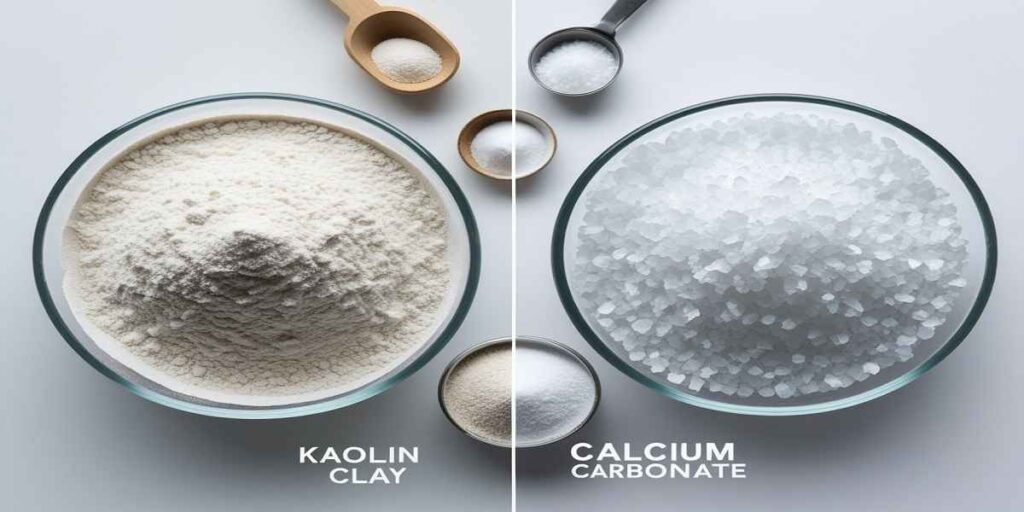
Whatever decision you make regarding your manufacturing process or materials will significantly impact operating costs and product performance.
Therefore, you must choose the mineral that benefits you precisely, and we are here to assist you with that. Look for the following things while selecting:
1. pH Requirement: Define the pH levels required for your product. Kaolin’s nature is close to neutral pH, whereas Calcium bentonite’s is alkaline and easily reacts with acids.
2. Particle’s character: The flat kaolin particles can give your product a smooth surface or better print quality. But if you want your product to be bright and rigid, then the hard and dense particles of Calcium carbonate can greatly benefit you.
3. Surface interaction: Kaolin can absorb other ingredients or chemicals. On the other hand, the absorptive nature of calcium carbonate can give your product a smooth surface and disperse active ingredients without interference.
4. Cost considerations: To minimize machine maintenance costs, consider using kaolin clay, as it causes less wear and tear. However, if you want a mineral that is readily available and less expensive on the market, simply choose calcium carbonate.
Connect with Us to Get the Right Mineral for Your Production!
As we saw above, both Kaolin clay and Calcium carbonate are excellent fillers, but they differ in several aspects that we discussed. A trusted mineral processing company can help you select the right filler for your needs.
Where kaolin outperforms in terms of surface smoothness, chemical stability, and heat resistance, Calcium Carbonate, on the other hand, stands out for its brightness and cost efficiency.
You can choose the right one if you follow the approach we discussed.
And if you need help deciding whether to use Kaolin Clay, Calcium Carbonate, or both at different phases of production, we’re here to help!.
At The Sharad Group, we manufacture high-quality minerals that are backed by:
- More than six decades of experience
- Over 300 Million Tons of Reserves
- Access to 3 international ports
- Multiple Grades
Connect with us today to receive a complimentary consultation and discover the ideal mineral solution that improves the quality of your product.
Kaolin Clay vs Calcium Carbonate: FAQs
1. What is the difference between calcium carbonate and kaolin?
The difference between calcium carbonate and kaolin begins with their categories, which are their primary distinction.
- The name of kaolin clay itself indicates that it is a type of clay, whereas Calcium carbonate falls under the category of salts.
- Therefore, calcium carbonate can dissolve easily, but also won’t if the pH level is high, such as in soaps, paints, plastics or rubber.
2. How to identify kaolin clay?
Generally, you can identify Kaolin Clay by looking at the following things:
- The shade can be from white to yellowish.
- Its texture will be like powder and will be non-calcareous.
- Perform a lab test to check whether the core mineral is kaolinite.
3. Which is better for paper manufacturing, Kaolin clay or Calcium carbonate?
Kaolin Clay is better than Calcium Carbonate in paper manufacturing as it can be used as a filler to improve the paper’s brightness, smoothness, and opacity.



